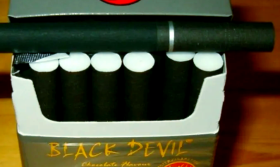Tobacco Increases the Recurrence Rate of Spontaneous Pneumothorax
Introduction
Spontaneous pneumothorax (SP) is a condition characterized by the sudden collapse of a lung due to air accumulation in the pleural cavity without any preceding trauma. It is classified into primary spontaneous pneumothorax (PSP), which occurs in individuals without underlying lung disease, and secondary spontaneous pneumothorax (SSP), which arises due to pre-existing pulmonary conditions such as chronic obstructive pulmonary disease (COPD) or emphysema. While various factors contribute to SP, tobacco use has been strongly linked to both its initial occurrence and recurrence. This article explores the mechanisms by which tobacco increases the recurrence rate of spontaneous pneumothorax, supported by clinical evidence and pathophysiological insights.
Pathophysiology of Spontaneous Pneumothorax
The primary mechanism behind SP involves the rupture of subpleural blebs or bullae—small air-filled sacs on the lung surface. When these structures burst, air leaks into the pleural space, causing lung collapse. In non-smokers, genetic predispositions or connective tissue disorders may contribute to bleb formation. However, in smokers, chronic inflammation, oxidative stress, and protease-antiprotease imbalance accelerate lung tissue damage, increasing the likelihood of bleb rupture and pneumothorax recurrence.
Tobacco Smoke and Lung Damage
Tobacco smoke contains over 7,000 chemicals, many of which are toxic and carcinogenic. Key harmful components include:
- Nicotine – Promotes vasoconstriction and reduces oxygen supply to lung tissues.
- Tar – Deposits in the airways, impairing ciliary function and mucus clearance.
- Carbon monoxide – Binds to hemoglobin, reducing oxygen transport.
- Reactive oxygen species (ROS) – Induce oxidative stress, leading to alveolar wall destruction.
Chronic exposure to these substances results in:
- Emphysema – Destruction of alveolar walls, forming larger bullae prone to rupture.
- Chronic bronchitis – Increased mucus production and airway obstruction.
- Impaired healing – Delayed repair of lung tissue, making recurrent pneumothorax more likely.
Clinical Evidence Linking Tobacco to Recurrent Pneumothorax
Multiple studies have demonstrated a strong association between tobacco use and pneumothorax recurrence:
-
Higher Recurrence Rates in Smokers
- A 2019 study in The Annals of Thoracic Surgery found that smokers had a 40-60% recurrence rate compared to 15-30% in non-smokers after initial treatment.
- The risk increases with pack-years (number of cigarettes smoked per day × years of smoking).
-
Delayed Healing and Treatment Failure
- Smoking impairs pleural healing after procedures like pleurodesis (a treatment to prevent recurrence by scarring the pleural space).
- Smokers are more likely to require repeat interventions such as surgical bullectomy or chest tube reinsertion.
-
Increased Risk in Secondary Spontaneous Pneumothorax
- Patients with COPD or emphysema (often caused by smoking) have a 50-80% recurrence rate if they continue smoking.
Mechanistic Explanation for Recurrence
-
Persistent Inflammation
- Smoking maintains a pro-inflammatory state, increasing matrix metalloproteinases (MMPs) that degrade lung tissue.
- This leads to new bleb formation even after initial treatment.
-
Impaired Pleurodesis Efficacy
- Chemical or mechanical pleurodesis is less effective in smokers due to reduced fibroblast activity and poor adhesion formation.
-
Increased Intrapleural Pressure Changes
- Smoking causes chronic coughing, which increases intrapleural pressure, raising the risk of bleb rupture.
Prevention and Management Strategies
To reduce recurrence, smoking cessation is critical. Effective approaches include:
- Behavioral Counseling & Nicotine Replacement Therapy (NRT) – Helps patients quit smoking.
- Surgical Intervention – VATS (Video-Assisted Thoracoscopic Surgery) with pleurodesis is more effective in smokers if combined with cessation.
- Long-Term Monitoring – High-risk patients (heavy smokers) should undergo regular follow-ups.
Conclusion
Tobacco use significantly increases the recurrence rate of spontaneous pneumothorax by promoting lung tissue damage, impairing healing, and reducing treatment efficacy. Smoking cessation remains the most effective strategy to prevent recurrence and improve long-term outcomes. Healthcare providers must emphasize tobacco avoidance in patients with a history of pneumothorax to minimize complications.
Key Takeaways
✔ Smoking doubles the risk of pneumothorax recurrence.
✔ Tobacco-induced lung damage weakens alveolar walls, increasing bleb formation.
✔ Smoking cessation is the most effective preventive measure.
By understanding the link between tobacco and pneumothorax recurrence, clinicians can better guide patients toward healthier choices and reduce complications.
Tags: #Pneumothorax #Tobacco #LungHealth #SmokingCessation #RespiratoryDisease #COPD #MedicalResearch













